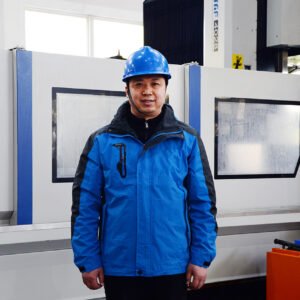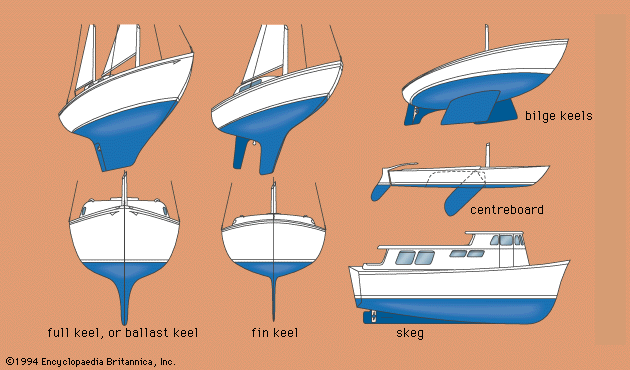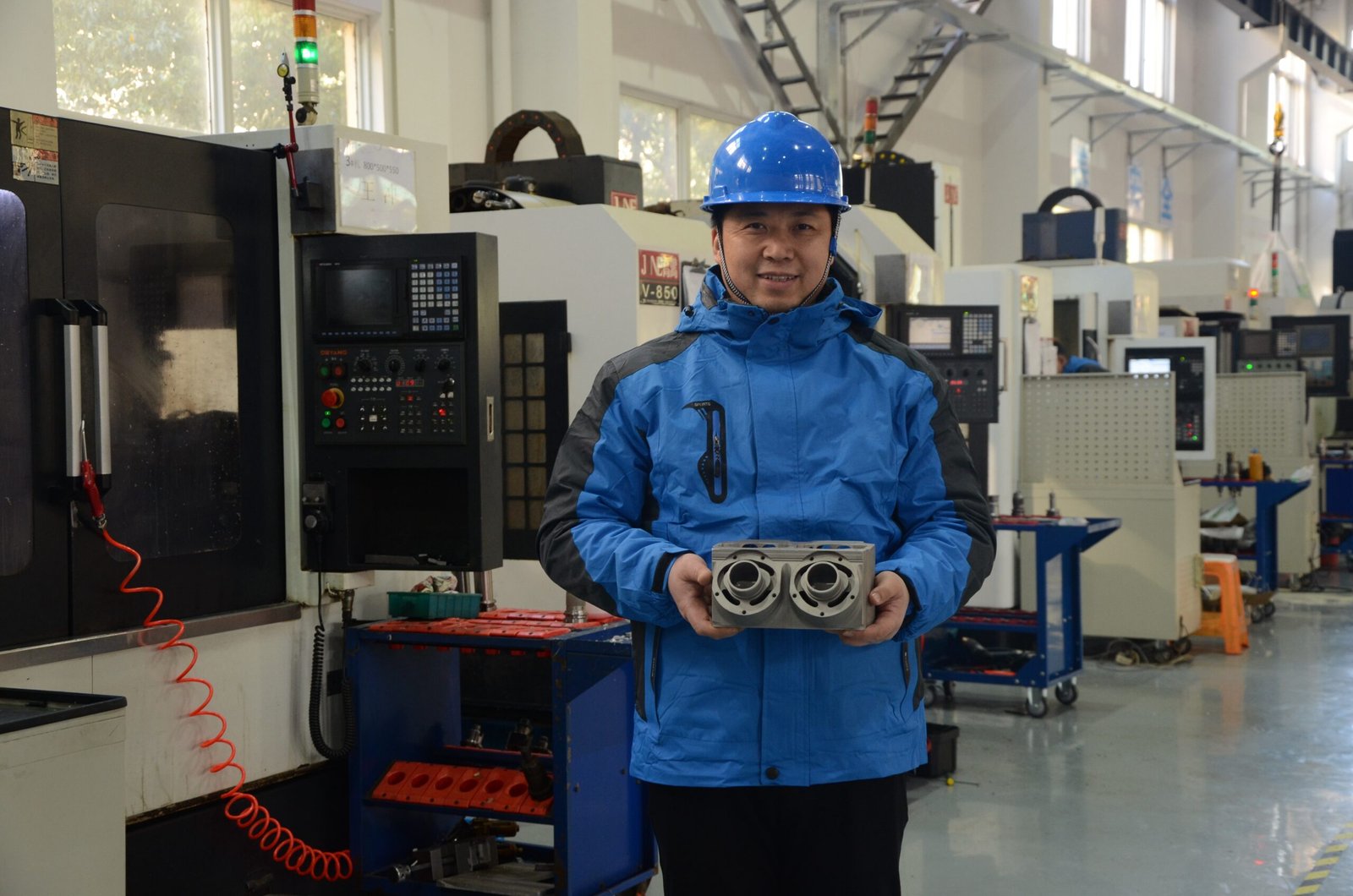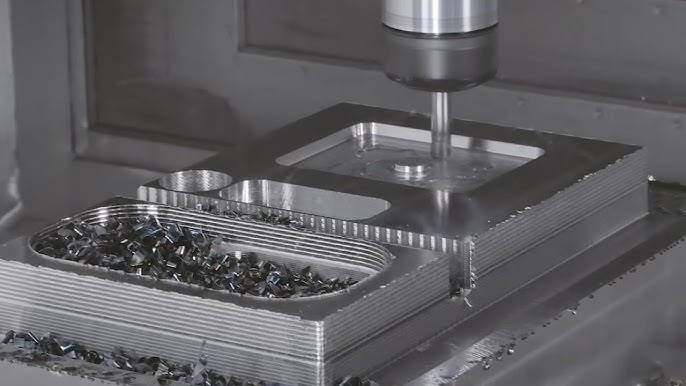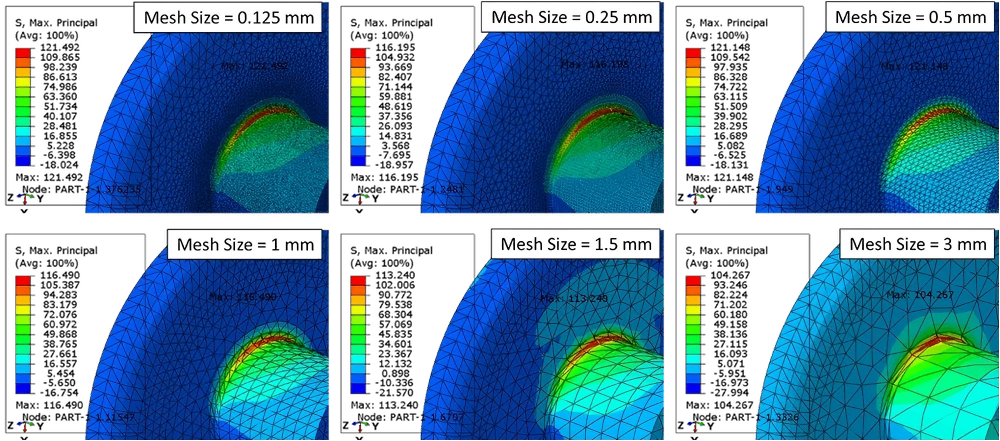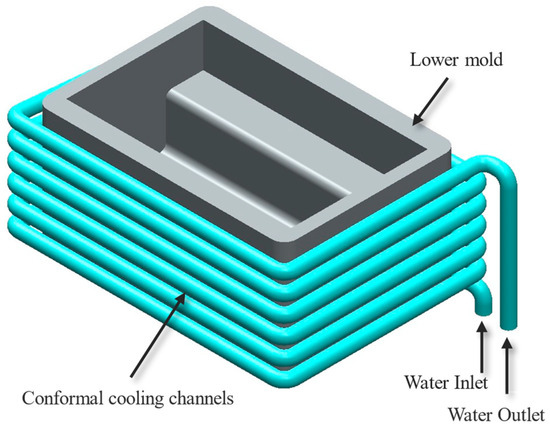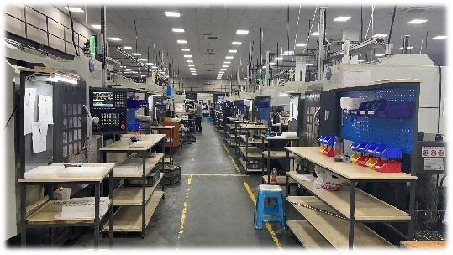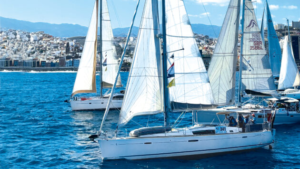
Each part of a sailboat influences its speed, stability, and overall performance in the sailing industry. The most important component of hydrodynamic efficiency among these is the keel, which minimizes drag while stabilizing the boat. As marine architects and sailing fans strive for excellence, conventional manufacturing techniques must provide the accuracy and creativity needed for the best keel designs.
At this point, CNC (Computer Numerical Control) machining takes over, transforming the procedure with unmatched precision and adaptability. Complex keel geometries that are suited for exceptional hydrodynamic performance can be created by CNC machining, which combines cutting-edge technology with creative design concepts. However, what precisely changes keel production with this innovative method, and why is it revolutionary for the sailing industry?
In this article, we explore the amazing ways that CNC machining is transforming keel design, revealing how it offers exceptional precision, opens up novel designs, and changes the sailing industry going forward. Is a new age of hydrodynamic efficiency pursued? Let's examine the solutions.
1. Sailboat keel Manufacturing evaluations
The production of sailboat keels has changed from conventional techniques to advanced CNC machining. The manual skill of traditional technologies, such as casting and hand-finishing, makes them cost-effective for small batches but lacks accuracy and consistency.
CAD designs and automated equipment, on the other hand, are used in CNC machining to achieve high precision, reproducibility, and efficiency, particularly for complicated designs and increased production. CNC is best at performance-oriented designs, whereas traditional methods work well for custom and low-budget applications. The best cost-precision ratio is frequently achieved by a hybrid process that combines CNC finishing and casting.
2. Overview of Keel Designs
A sailboat's keel is an essential part that maximizes the boat's hydrodynamic performance, reduces sideways drift, and provides stability. Different boat sizes, performance objectives, and sailing circumstances are accommodated by different keel designs. An examination of the most popular keel types and their distinctive qualities is described below.
- 2.1 Types of Keels
1. Fin keel.
The fin keel is a thin, vertically oriented keel that is fastened to the sailboat's underside. Its improved mobility and less drag make it a popular choice for racing and performance-oriented sailboats. Though some stability is lost in choppy waters, the lower surface area reduces resistance, making it perfect for speed.
2. Bulb keel
A bulb keel has a thinner fin with a weighted bulb at its base. By reducing the boat's center of gravity, this design improves stability without appreciably raising drag. It is preferred for racing and offshore cruising, where performance and balance are crucial.
3. Full keel.
The full keel, which runs the length of the boat, provides better tracking and stability. Although slower speeds and less maneuverability are the trade-offs, its shape is perfect for long-distance cruising since it offers a smoother ride and more directional control.
4. Wing keel.
The base of the wing keel has horizontal projections that resemble wings. It is effective in shallow waters because of its design, which increases lift and decreases drag. The success of the 1983 America's Cup-winning boat Australia II, which had a wing keel for competitive advantage, brought attention to this novel design.
5. Centerboard Keel
A centerboard keel is a retractable fin keel perfect for boats that must maneuver in shallow waters. It can be raised and lowered, retracted to minimize draft while docking or approaching shallow locations, and extended to offer good stability.
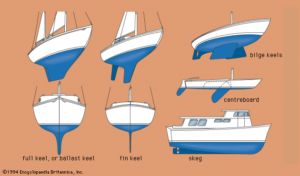
6. The Drop Keel
A retractable keel that falls vertically into a slot under the hull is called a drop keel, just like the centerboard. It is a flexible option for cruising in regions with different water depths since the drop keel allows for an adjustable draft.
7. The Leeboard
A flat, typically asymmetrical board that is fixed to one side of the boat to provide stability and lateral resistance is called a leeboard. It is mostly utilized on smaller boats and traditional vessels for better control, however unlike a centerboard, it does not retract into the hull.
8. Dual Keels
Bilge keels, also known as twin keels, are made up of two smaller keels that are positioned on either side of the hull. Due to its wider base of support, this design produces stability and is frequently used on cruise boats that must stay upright in shallow waters or while grounded. Additionally, it makes secure beaching of vessels possible.
9. Keel-Skeg
A skeg keel's long, narrow extension at the stern enhances the boat's directional stability and shields the rudder from harm. In stormy waters, it improves control by assisting the boat in tracking straight. The skeg improves handling and guarantees more seamless turns. Long-distance and larger cruising yachts frequently use it.
- 2.2 Factors Influencing Keel Design
Keel design is a complicated procedure that requires striking a balance between several variables to satisfy the unique requirements of a sailboat. The ultimate keel design is influenced by several factors, including environmental concerns and performance objectives. The following are the crucial elements:
1. Performance of Hydrodynamics
Improving the sailboat's hydrodynamic efficiency is the main objective of keel design. Lift, drag, and stability are all directly impacted by the keel's size, shape, and angle. To increase speed and maneuverability, designers work to decrease resistance while enhancing lift.
2. Requirements for Stability
Keels are essential for preserving a sailboat's stability since they oppose the wind's power on the sails. The keel depth and ballast distribution are precisely measured to reduce the center of gravity and avoid capsizing.
3. Weather Conditions for Sailing
The planned sailing environment must be taken into consideration while designing the keel. While deep fin keels are more suited for open waters and racing, shallow-draft keels, such as wing keels, are best for coastal and shallow waters.
4. Materials for Construction
Its weight, durability, and performance are all influenced by the keel's material, which can be lead, cast iron, or composite. For designs that prioritize speed, lightweight composites are frequently utilized, although heavier materials, such as lead, offer superior stability.
5. Type and Size of Boats
The sailboat's goal, weight, and size all affect the keel design. While full or wing keels may be preferred for comfort and stability in cruising sailboats, racing yachts usually use fin or bulb keels for speed and agility.
6. Class and Regulatory Restrictions
Race sailboats frequently have to follow class regulations that specify the size and form of their keels. These limitations have an impact on the design process, guaranteeing adherence and optimizing performance within permitted bounds.
3. CNC Techniques in Keel Fabrication
Keel fabrication has undergone a revolution due to the introduction of CNC (Computer Numerical Control) machining, which makes imaginative, accurate, and efficient designs possible. Keels with unmatched accuracy and performance-enhancing characteristics can be produced by manufacturers using sophisticated CNC processes. The main CNC methods for keel manufacturing are examined in depth here.
- 3.1 Precision Cutting
Keels are manufactured according to precise specifications by using CNC precision cutting, which guarantees excellent accuracy and low tolerances. This method expedites production, maximizes the usage of expensive metals like lead or titanium, and minimizes material waste. The end product is a precisely formed keel that is prepared for additional assembly and processing.
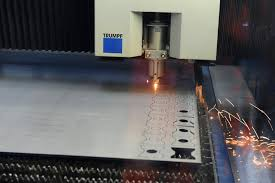
- 3.2 Contouring and Profiling
CNC machines can create intricate keel shapes with streamlined, smooth surfaces that improve hydrodynamic performance through contouring and profiling. Custom shapes, like those for wings or bulbs, can be created using sophisticated software and remain consistent after several production runs. Additionally, contouring encourages creative designs that enhance overall sailing performance without sacrificing robustness.
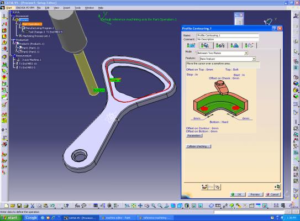
Contouring and Profiling Operation
- 3.3 Drilling and Assembly Preparation
Keel assembly is made easier by CNC machining, which creates slots for bolts for ballast integration and drills precisely aligned holes. This procedure guarantees a smooth installation, cuts down on labor time, and improves the keel's overall structural integrity, allowing for instant usage. The precision of CNC drilling guarantees that the keel can sustain marine stresses without sacrificing performance or safety, improving its structural dependability.
3.4 Weight Optimization
Strategic material elimination made possible by CNC machines leads to strong, lightweight keels with ideal weight distribution. By making sure the keel's weight is precisely balanced, this method increases stability and performance while enhancing speed and maneuverability. This method is especially helpful for racing yachts, where speed and agility can be greatly affected by even small weight changes. In contemporary keel design, CNC machining is crucial for striking a balance between durability and weight.
3.5 Surface Finish
The hydrodynamic performance of the keel can be enhanced by precise surface finishing techniques like polishing, grinding, and sandblasting made possible by CNC machining. Water flow around the keel is improved and drag is decreased by a smooth surface. Additionally, CNC-controlled finishing minimizes flaws that could impair performance by guaranteeing consistency throughout the keel. By eliminating sharp edges and priming the surface for coatings or anti-corrosion treatments, these cutting-edge methods increase the keel's longevity.
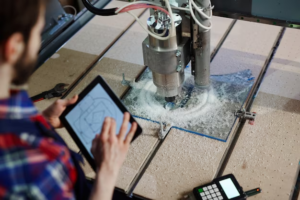
3.6 Intricate Geometries
Complex keel designs that are impossible to create using conventional techniques are expertly crafted by CNC machines. Dynamic, three-dimensional shapes that are adapted to particular sailing conditions can be produced using sophisticated multi-axis CNC systems. By pushing the limits of what is feasible in keel architecture, CNC machining enables designers to experiment freely, creating streamlined bulbous bases and swept-back wing designs.
4. Ensuring Hydrodynamic Performance
Optimizing hydrodynamic performance is a crucial component of keel construction and design. Achieving the accuracy and effectiveness required for peak performance on the water is made possible in large part by CNC machining. The following are the main ways that CNC methods improve hydrodynamic performance.
- 4.1 Precision in Keel Geometry
Keel geometry accuracy has a direct effect on lift, drag, and stability. Precision curve, angle, and dimension shaping are ensured by CNC machining, which maximizes water flow and reduces resistance. The keel's hydrodynamic performance and efficiency are improved by this accuracy, which removes turbulence.
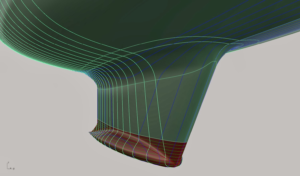
- 4.2 Hydrodynamic Testing with CNC Models
Scale models or prototypes can be made using CNC machining for hydrodynamic testing in controlled settings, such as water tanks or wind tunnels. Before the final product is put into full-scale production, these tests ensure that the stability and speed criteria are met by improving the keel designs.
- 4.3 Surface Finishing for Smooth Flow
A smooth keel surface produced by CNC surface finishing methods like polishing and grinding reduces drag and guarantees constant water flow. While preparing the keel for protective coatings that increase longevity in marine environments, improves speed and efficiency.
5. Merial Considerations in CNC Keel Machining
Choosing the appropriate materials is essential for CNC keel machining since it affects the weight, durability, and performance of the keel. To balance cost and performance, material selection is influenced by factors like machinability, strength, and resistance to corrosion.
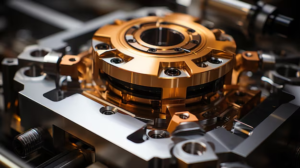
- Cast iron: It is strong, affordable, and long-lasting, but it corrodes easily, thus protective coatings are required.
- Steel Alloys: Suitable for keels subjected to severe marine conditions, stainless and high-strength steel alloys offer exceptional durability and corrosion resistance.
- Titanium: Perfect for performance-focused designs, titanium is lightweight and extremely resistant to corrosion, but it has higher material and manufacturing costs.
- Composites: Cutting-edge composite materials improve hydrodynamic efficiency without compromising strength by providing lightweight and customizable solutions.
- Lead: It is a common ballast material, lead offers superior density for stability but needs to be handled carefully because it is toxic and delicate.
The choice of material is essential to guaranteeing the keel's endurance, functionality, and capacity to tolerate the rigors of maritime settings. These materials are precisely formed and put together to satisfy design specifications thanks to CNC machining.
6. Integration of CAD/CAM in Keel Design and Machining
The production process has been completely transformed by the incorporation of computer-aided design (CAD) and computer-aided manufacturing (CAM) in keel design and machining, which has improved accuracy and efficiency. Keel fabrication may accomplish complex shapes and ideal hydrodynamic performance by fusing the accuracy of CNC machining with the power of CAD/CAM software.
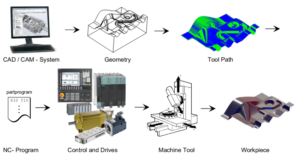
CAD (Computer-Aided Design): This software enables designers to produce incredibly precise and detailed 3D models of keels. Before physical production starts, it is simple to alter, evaluate, and improve the performance of these models. With CAD, manufacturing errors and revisions are minimized because every size, angle, and surface is precisely in line with the intended design.
CAM (Computer-Aided Manufacturing): CNC machines are instructed by CAM software, which converts CAD designs into machine instructions, enabling them to precisely cut, grind, and shape the keel components. By lowering human error, automating the machining process, and guaranteeing repeatability across several units, CAM increases manufacturing efficiency. It also makes complex processes possible, including multi-axis machining, which is essential for creating complex keel designs.
Seamless Integration: A seamless workflow from design to manufacturing is ensured by the smooth integration of CAD and CAM. This collaboration speeds up the design process, cuts down on lead times, and improves the keel's overall quality. Furthermore, the CAD environment's simulation and virtual testing capabilities reduce the need for expensive physical testing and enhance the hydrodynamic performance of the finished design.
7. Which keel design is best for a sailboat?
The sailboat's intended use and sailing conditions determine the ideal keel design. The speed and maneuverability of a fin keel make it perfect for racing and performance. With its remarkable stability and control in choppy waters, a full keel is advantageous for long-distance cruisers.
For lower draft and mobility, a lifting keel or wing keel is the preferable option in shallow waters. By combining a deeper draft with less weight for increased efficiency, a bulb keel may be the choice of sailors looking for a balance between stability and performance. The best performance and safety are guaranteed when the proper keel is chosen.
8. Challenges in CNC Machining of Keels
Although CNC machining has several benefits for producing keels, there are a few issues that need to be resolved to guarantee the best outcomes. The intricacy of keel designs, material characteristics, and the harsh circumstances of marine locations are the causes of these difficulties.
8.1 Complexity of Materials
Each of the various keel materials—lead, cast iron, or composites—presents different machining difficulties. For instance, because of its toxicity and softness, lead needs to be handled carefully, and composite materials might need specific tools and methods to prevent delamination. Certain materials' machinability might affect production costs and overall efficiency.
8.2 Accuracy and Allowances
Complex geometries and precise tolerances are common in keel designs, which necessitate the highest level of accuracy from CNC machines. Even little dimensioning mistakes might have an impact on the keel's hydrodynamic performance. High-quality CNC machinery and knowledgeable operators are needed to oversee minute adjustments and guarantee that the design criteria are fulfilled to achieve this degree of accuracy.
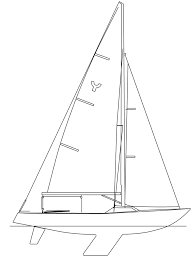
8.3 Tool Upkeep and Wear
High-speed tools used in CNC machining have the potential to deteriorate with time, particularly when handling abrasive or hard materials. Frequent maintenance and tool replacement may be necessary as a result of the machining process deviating due to tool wear. Effective tool life management is essential to preserving part quality and production efficiency.
8.4 Multi-Axis Machining Complexity
Multi-axis machining is frequently necessary for keel designs to produce complex forms and profiles. The likelihood of misalignment, tool interference, or cutting errors is increased by this complexity. To guarantee that the machine runs smoothly on all axes and generates the required geometry without any issues, proper programming and configuration are essential.
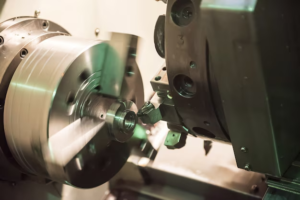
7.5 Finishing the Surface and Post-Processing
For maximum hydrodynamic performance and endurance, keels frequently need further surface finishing after machining, such as polishing, grinding, or coating. It can take some time and careful manipulation to create a smooth, uniform surface without breaking the keel. Efficient management of these post-processing procedures is essential to guarantee that the finished product satisfies performance and aesthetic requirements.
9. Benefits of CNC in Keel Fabrication
CNC machining, which offers various benefits over conventional manufacturing techniques, has emerged as a crucial tool in keel construction. These advantages, which include efficiency and accuracy as well as the capacity to manage intricate designs and materials, make CNC a crucial tool for producing high-performance keels for contemporary sailboats.
9.1 Increasing Accuracy and Precision
Every keel is manufactured to precise specifications with little room for error thanks to the unparalleled precision of CNC machines. Maintaining ideal hydrodynamic efficiency requires this degree of precision since even little variations in the keel's geometry can have a big impact on its stability and speed.
9.2 Customization and Complex Geometries
Intricate and unique keel designs that would be challenging or impossible to accomplish with conventional techniques can now be created thanks to CNC machining. Designers can optimize hydrodynamics and customize keels for particular performance objectives by using CNC machines to create intricate shapes and curves, such as a bulbous fin or a complex winged keel.

9.3 Quicker Production Schedules
Keel fabrication may be finished considerably more quickly with the automation that CNC machines offer than with human methods. Continuous programming and operation of machines shorten production times and facilitate faster design iterations, guaranteeing that testing and manufacturing schedules are fulfilled without sacrificing quality.
9.4 Increased Effectiveness of Materials
Through accurate material cutting and shaping following design standards, CNC machining reduces waste. Because less junk is produced, especially when working with pricey metals like lead or titanium, producers can save money on materials and promote sustainability at the same time.
9.5 Regularity and Reliability
CNC machines provide unmatched consistency, guaranteeing that every keel produced satisfies the original requirements. No matter how many units are manufactured, this repeatability is essential for high-volume production since it guarantees that every keel has the same dimensions, shape, and performance.
10. Case Studies: CNC-Enhanced Keel Designs
- Case study: Custom Keels for Severe Conditions in the Volvo Ocean Race
- Challenge: Teams competing in the Volvo Ocean Race need keels that combine speed, stability, and handling to withstand harsh marine conditions. Creating keels that could withstand high-stress situations like smashing waves, strong winds, and quick maneuvers was the main issue. The design also needed to be sturdy and lightweight, which required the use of cutting-edge materials and the achievement of incredibly tight tolerances.

- Solution: The race Team created high-performance, customized keels using CNC machining to satisfy these requirements. To create intricate, incredibly accurate designs that maximized hydrodynamic efficiency while reducing weight, the team used multi-axis CNC machines. By combining bulbous and winged keel shapes, CNC technology improved the boat's stability without compromising speed. Before the keel design was physically manufactured, it was optimized through simulations made possible by CAD/CAM software, guaranteeing that the finished product would function under the most demanding circumstances.
- Case Study: Royal Huisman- Custom Superyacht Keels
- Challenge: The challenge of creating a keel for a 55-meter superyacht that was highly customized and needed a precise balance of weight, strength, and stability fell to Royal Huisman, a well-known Dutch shipyard. To guarantee the yacht's stability and preserve its sleek, exquisite appearance, the keel had to incorporate a unique ballast system.
- Solution: Royal Huisman employed CNC machining to precisely construct the intricate curves and contours needed for the keel to overcome these difficulties. The team ensured the final result would match the yacht's stability requirements by simulating the keel's performance using CAD software. While maintaining the overall design's lightweight and hydrodynamic efficiency, CNC machines offered the accuracy required to mill the ballast cavities precisely. The manufacture of a custom keel that satisfied the yacht's high requirements and specifications was made possible by the smooth integration of CNC technology.
11. Future of CNC in Keel Design
The role of CNC machining in keel design and fabrication is expected to grow as it develops further, providing the maritime sector with exciting new opportunities. The future of CNC in keel design appears bright due to breakthroughs in digital tools, material science, and technology. Several significant advancements are anticipated.
- Advanced Materials: CNC will make it possible to employ strong, lightweight materials like titanium alloys and carbon fiber composites, which will improve keel performance and save weight.
- 3D Printing & CNC Hybrid Manufacturing: By combining 3D printing and CNC, it will be possible to produce complex designs more quickly and efficiently, pushing the limits of keel design.
- Smart CNC Machines: AI, sensors, and automation will all be included in future CNC machines to maximize accuracy, lower errors, and accelerate production—all of which will increase process efficiency.
- AI-driven build: Using data-driven insights to maximize performance and customization, AI will help to build hydrodynamic keels.
- Sustainability: Through the reduction of material waste and the utilization of sustainable materials in keel manufacture, CNC machining will promote environmentally friendly activities.
- Customization & On-Demand Production: CNC will simplify and lower the cost of producing custom keels, enabling customized designs without the exorbitant expenses associated with conventional techniques.
Conclusion
The advancement of yacht and boat performance is expected to be significantly influenced by the use of CNC machining in keel design in the future. The development of lighter, stronger, and more accurate keels will be made possible by CNC, continuous advancements in materials, hybrid production processes, intelligent automation, and AI-driven design.
In addition, to lowering production costs and promoting sustainable practices in the marine industry, this will increase hydrodynamic efficiency. More customization, quicker manufacturing timelines, and more accurate control over keel geometry will be made possible by CNC machining as technology advances, which will ultimately change how yachts and boats function under various circumstances.

